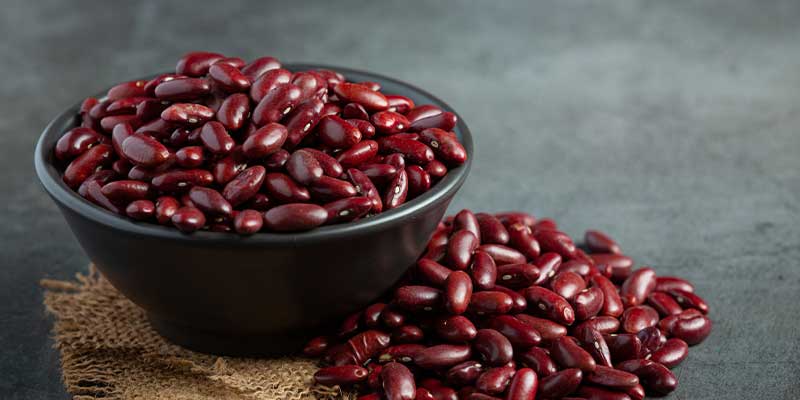Rajma Protein Per 100g
Rajma, also known as kidney beans, is a staple in Indian cuisine and beloved worldwide for its rich flavor, creamy texture, and versatility in various dishes.
While it is commonly enjoyed in hearty curries and stews, rajma is also a nutritional powerhouse, particularly when it comes to protein content.
| Quick Summary |
| 100 grams of rajma (kidney beans) contain about 24 grams of protein, making them a rich source of plant-based protein. |
In this blog post, we’ll delve into the protein content of rajma per 100 grams, its health benefits, and why it should be a regular part of your diet.
Protein Content in Rajma Per 100g
Rajma is an excellent source of plant-based protein, making it an ideal food for vegetarians, vegans, and anyone looking to increase their protein intake.
100 grams of raw rajma (kidney beans) provides approximately 24 grams of protein.
When cooked, the protein content is slightly reduced due to the absorption of water, with cooked rajma offering around 8 to 9 grams of protein per 100 grams.
This protein content makes rajma comparable to other protein-rich legumes, such as:
- Chickpeas: Approximately 19 grams of protein per 100 grams of raw chickpeas.
- Lentils: About 9 grams of protein per 100 grams of raw lentils.
- Soybeans: Around 36 grams of protein per 100 grams of raw soybeans.
5 Health Benefits of Rajma
Beyond its protein content, rajma offers a range of health benefits, making it a valuable addition to a balanced diet:
-
Rich in Fiber: Rajma is high in dietary fiber, which aids in digestion, helps regulate blood sugar levels, and promotes heart health by lowering cholesterol.
-
Low Glycemic Index: Rajma has a low glycemic index (GI), meaning it causes a slow and steady rise in blood sugar levels, making it an ideal food for people with diabetes or those looking to manage their blood sugar levels.
-
Packed with Essential Nutrients: Rajma is a good source of essential vitamins and minerals, including iron, magnesium, potassium, and B vitamins. These nutrients are vital for maintaining energy levels, supporting metabolic functions, and promoting overall health.
-
Antioxidant Properties: Rajma contains antioxidants like polyphenols, which help protect the body from oxidative stress and reduce the risk of chronic diseases such as heart disease.
-
Heart Health: The combination of high fiber, low fat, and antioxidants in rajma supports heart health by lowering cholesterol levels and reducing inflammation.
How to Incorporate Rajma into Your Diet
Rajma is incredibly versatile and can be incorporated into your diet in various delicious ways:
-
Rajma Curry: A classic dish where rajma is simmered in a spicy tomato-based gravy, usually served with rice (rajma-chawal) or roti.
-
Salads: Add boiled rajma to salads for a protein-rich meal. Combine it with vegetables, herbs, and a light dressing for a nutritious and satisfying dish.
-
Soups and Stews: Rajma can be added to soups and stews to increase the protein content and add a hearty texture.
-
Rajma Wraps: Use cooked rajma as a filling for wraps or burritos, along with vegetables, salsa, and yogurt.
-
Rajma Kebabs: Mash boiled rajma and mix with spices to form patties, then grill or pan-fry them for a tasty, protein-packed snack or meal.
Conclusion
Rajma is not just a flavorful addition to your meals; it’s a nutritional powerhouse, especially in terms of protein content.
With 24 grams of protein per 100 grams in its raw form, rajma is one of the best plant-based protein sources available.
It’s not only a great choice for vegetarians and vegans but also for anyone looking to boost their protein intake while enjoying a variety of health benefits.
So, the next time you’re planning your menu, don’t forget to include this protein-packed legume—it’s good for your taste buds and your health!


